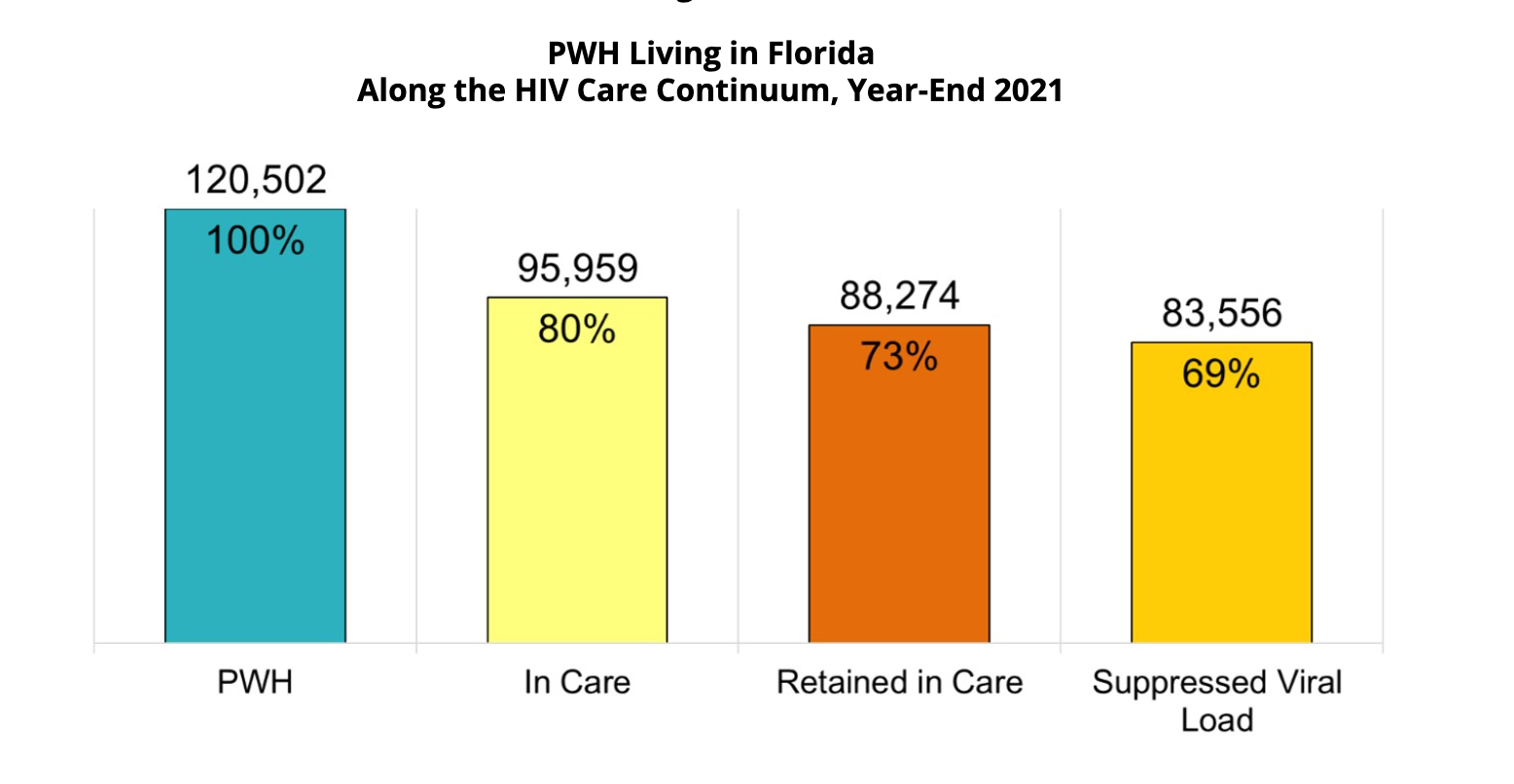HIV and AIDS in Florida, the State of Play
Florida has among the largest populations of people living with HIV in the country. We spoke with a clinician with 40 years of experience taking care of Floridians with HIV.
Edwin Bosa-Osorio, M.D., has been taking care of HIV patients in the Miami area since the late 1980s. He is a faculty members in the family practice program at The Brodes H.Hartley Jr. Teaching Health Center in Miami. The teaching health center is part of the Community Health of South Florida, which comprises 13 community health centers in the Southern Florida.
Source: Florida Department of Health PWH = People living with HIV

About 4,700 people in Florida were newly diagnosed as being infected with HIV in 2021, and the Florida Department of Health estimated that there were about 120,000 people in the state living with HIV that year. Florida has one of the largest populations of people with HIV in the country.
Managed Healthcare Executive® interviewed Bosa-Osorio recently about HIV/AIDS in Florida.
Miami, Orlando and Jacksonville routinely rank among the top 10 metropolitan areas for HIV diagnosis rates. Why do these Florida cities have so many cases of HIV?
The Southeastern United States has one of the highest incidence rates of HIV cases in the country and those three areas in Florida have highest incidence in the state. The incidence is higher here because of cultural problems, especially the stigma of HIV and the lifestyle of homosexuality. Therefore, stopping the stigma helps to normalize HIV and eliminating the fear that keeps individuals from receiving the knowledge needed to keep themselves safe and healthy. Unfortunately, the political environment has contributed to making that worse. It makes folks not want to reach out to get tested or treated.
Edwin Borsa-Osorio, M.D.

What are the numbers say about communities of color—especially in Black and Hispanic populations?
In 2021, Black people made up 15.3% of the total population in Miami-Dade County but they make up 39.3% of people living with HIV and 45.8% of people living with AIDS. Meanwhile, Hispanics represent 68.9% of the total population in Miami-Dade County and they made up 49.6% of people living with HIV and 43.9%of people living with AIDS.
The burden of HIV in these communities is greatly influenced by social determinants of health such as homelessness, poverty, racism, violence, stigma, homophobia and transphobia, which prevents individuals from participating in prevention activities and accessing care.
What are the main challenges?
The biggest problem is getting people tested to identify who is at risk or who is actually HIV positive. The best solution is spreading the word and outreach programs, and demystifying what HIV is. We have to all do our best to demystify these things and let people know the benefit of being tested and getting care. The way things have been going in the last several years, we have medicines that can help in the prevention of HIV so people in the high-risk group can take one pill a day and help them prevent getting HIV, but they need to be better informed about it.
What resources are in Florida to help? Are they better than those in other states?
I think so. I have had some patients that have traveled from other areas. We do have a lot of help from the government. The Ryan White Program for HIV is one program that has been established, and it’s amazing how much it helps those who are uninsured. It has no bearing on anything related to citizenship. It helps anyone who needs it. We still have a lot of work to do to educate people, though.
FDA Accepts NDA for Gilead's New HIV Prevention Shot
February 18th 2025Lenacapavir is a twice-yearly injectable medication designed to be used as pre-exposure prophylaxis (PrEP). The FDA is giving this drug a priority review and expects to make a decision by June 19, 2025, according to a release.
Read More